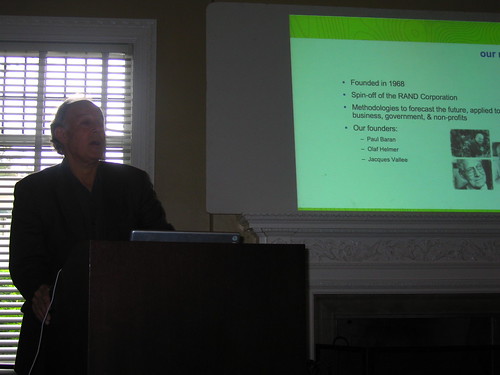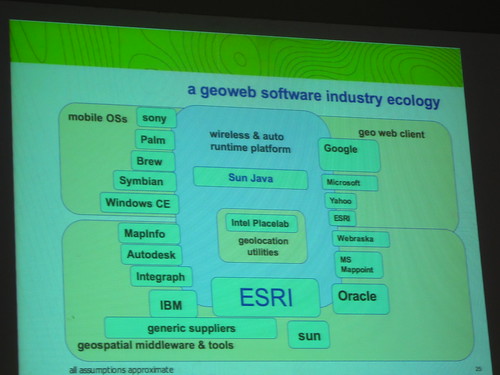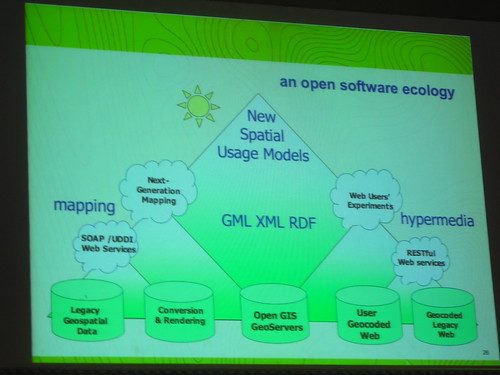From September 2005 to June 2006 a team of thirteen scholars at the The University of Southern California's Annenberg Center for Communication explored how new and maturing networking technologies are transforming the way in which we interact with content, media sources, other individuals and groups, and the world that surrounds us.
This site documents the process and the results.
categories
Teen Content Creators
Nicolas caught this relevant nugget — a recent report from the Pew Internet & American Life Project (what researcher wouldn't want to be a part of something with a name like that!) on teen content creators. I'm assuming these are digital kids kind of teen content creators.
Quote
Teen Content Creators:
The latest report from the Pew Internet, which deals with ‘teen content creators’, is very insightful. It reports that more than half of online teens have created content for the internet; and most teen downloaders think that getting free music files is easy to do
thx nicolas
Technorati Tags: digital kids
microlocal, in South LA
Shahram, Julian, Anne and I just submitted a grant proposal to USC's Urban Initiative to explore microlocal urban media in South Los Angeles. To illustrate, I wrote a microlocal story about this spot.
That page includes an ICBM geotag. How would I go about displaying it on a googlemap?
LA Weekly Article "Digital Universe with LA at its Center"
Net Publics Julian Bleecker is mentioned in an article on the new media scene in LA in this week’s LA Times. Even more interesting than the article is the rancorous discussion it set of on LA new media artists and their relation to the military/education/entertainment complex. You can read the discussion here. And here is a post that didn’t make it onto the list.
sony more evil than MS or Google?
It seems that Sony is using some new DRM that essentially utilizes malware technology and installs nasty things without telling you. Very detailed info here:
appropriate use of technology: podcast #2
I seem to be on a roll. Following up on the first podcast (that I had been meaning to do for the last 2 years), I present my second. This one is a longer form piece that started as a written concert review. But text just couldn't really cut it for this application. Enter the podcast, which imho is a perfect medium for this kind of thing. Comments welcome.
Another response to Mike Liebhold on Geospatial Web
See my comment on Mike Liebhold's lecture here.
Response to Michael Liebhold on The Geospatial Web
I posted my remarks on Michael Liebhold's talk on The Geospatial Web here
Michael Liebhold Talk
Service Ecologies and The Geospatial Web

Mike Liebhold is here today to talk on the topic of the Geospatial web.
What does the IFTF do?Brainstorm through possible, plausible, probable and preferred futures. Present a context for understanding the future. Up to clients to develop insights based on the foresights. Foresight to insight actions is the operating principle of the company.
Research areas are sociological impacts of technology.
Some IFTF clients: AMA, Johnson & Johnson, Alstate, Intel, Pepsico, Lego, Kraft, Kodak, Honda, McDonalds.
Methodologies: Mapping, Ethnographic, Expert workshops & interview; Scenario development & analysis; Surveys & quantitative analysis (sort of..); content facilitation; prototyping/artifacts (building objects from the future.)
* US / ICANN vs ITU / UN
* The Chinese future of IPv6
* Economies of scale drive specifications
* The Golden Shield
What happens if the US holds onto ICANN and others want to split off the root server infrastructure?
What is the lesson here? Chinese are buying lots and lots of Nextel, etc., so they can influence technology design by virtue of their force in the economics of design — they can say what they'll buy and when they're buying lots of something, they can shape design and thereby create protocols or variations of protocols independent of task forces.
Platforms: P2P Networks
* Mesh Networks
* Automotive Nets
* Sensor Nets
* Self-configuring Nets
Trend in the future for web-like experiences out in the world. Leads to the Geospatial Web.
What is interesting here? Imaginary world draped over physical world. Long standing area of interest for Mike. Profound new kind of world wide web, hypermedia objects are not just identified by URI or URL but by spatial coordinates — lat/lon/elevation. What are these? Text objects; sounds; images. Enormous amount of cartographic data that should be viewed in situ. Invisible attributes become visible. Sentient landscapes. Context-aware computing. Geoweb Geospatial Ecosystem* Geolocation Techniques
** location-aware software (triangulation)
** location-aware devices (e.g. GPS)
** location-sensing networks (e.g. E911) What is interesting here? General concern with privacy, partially because there aren't open systems for these.
Placelab.org is an alternative, because it's open. Telco carriers have the location info, but they won't make it available because they want to charge you or worse. So the economics of that proposition are not compelling to end users who don't want to feel like they're getting nickel-and-dimed. * devices for augmented perception
** smart phones & PDAs
** automobile computers
** body extensions (pens, cameras, earphone rigs, pens) What is interesting here? Not at all clear how the device ecology will evolve. * location-aware services
** walled gardens (sadly..)
** carrier services
** enterprise servcies
** Google Earth
** MS Virtual Earth
** Sony XYZ — head-mounted video, dashboard graphics. What is interesting here? You may want to hold up a device to see things as you move around, rather than on a downward facing screen. Geoweb Software Industry Ecology
 What is interesting here?Open mapping services allow you to import standard maps into Google Maps — detailed in new book called Google Map Hacks by O'Reilly.
an open software ecology
What is interesting here?Open mapping services allow you to import standard maps into Google Maps — detailed in new book called Google Map Hacks by O'Reilly.
an open software ecology
 What is interesting here? There's a software ecology and an industry ecology and a bit of confusion amongst them. Or maybe it's that the two "ecologies" don't overlap in that the industry ecology does not open up their platforms to the software ecology. Walled garden problem.
geospatial policies
* contextual privacy
What is interesting here? There's a software ecology and an industry ecology and a bit of confusion amongst them. Or maybe it's that the two "ecologies" don't overlap in that the industry ecology does not open up their platforms to the software ecology. Walled garden problem.
geospatial policies
* contextual privacy* freely accessible geolocation APIs
* public geodata services What is interesting here? Interesting practices for creating geodata — individuals, local groups, creating their own maps through grassroot means, and spunky, hacky techniques such as walking/riding with GPSs. Same sort of way that NAVTEQ does, only open. Also, Institute for Applied Autonomy's iSee. Geodata Search * clearinghouses
* gateways
* repositories
* namespaces
* geoweb servers Integrated GIS & Web Hypermedia / Realtime Cubit Cartography
Usage: Computational Grids
* health mapping** epidemiological + environmental maps
** health resources
** risky places
** people at risk
* security
* Geo Demographics
** microzone advertising
* at-risk ecologies
** eco-tourism
** green mapping
** indigenous mapping
* path-making (capturing folkloric knowledge of a place)
* pixel views: fragmenting places and spaces (micro views into a farm field)
* ground truth: empowering people in place (creating your own community information and stories in place)
Technorati Tags: geospatial web, locative media, Service Ecology
pushing copyright: my podcast
http://nostatic.com/podcasts/brandyCast.mp3
First in what should be a fairly extensive series. Who knows...maybe it'll crank some people off, although it shouldn't. There has to be the ability to legally "quote" something other than text.
its the windows, stoopid
Many electrons have given their life in discussing the video iPod and the ramifications (or lack thereof). The problem is that most seem to be missing a critical piece of the puzzle: its about the windows. And no, I'm not talking about Microsoft. Films have certain release windows...ie theaters, dvd release, VOD, cable, TV. These are gentlemens agreements between the studios. The problem that is hounding the iPod, VOD, and related distribution is that it falls *after* the DVD window. Why download if you've already bought? It is not secret that the studios make a nice chunk of money on each DVD sold. They make about 5x *less* on a VOD purchase. But they can make it up in volume, right? Well, not if the window for "buying" on VOD/iTunes falls after the DVD has been on shelves for awhile.
.
.
